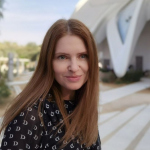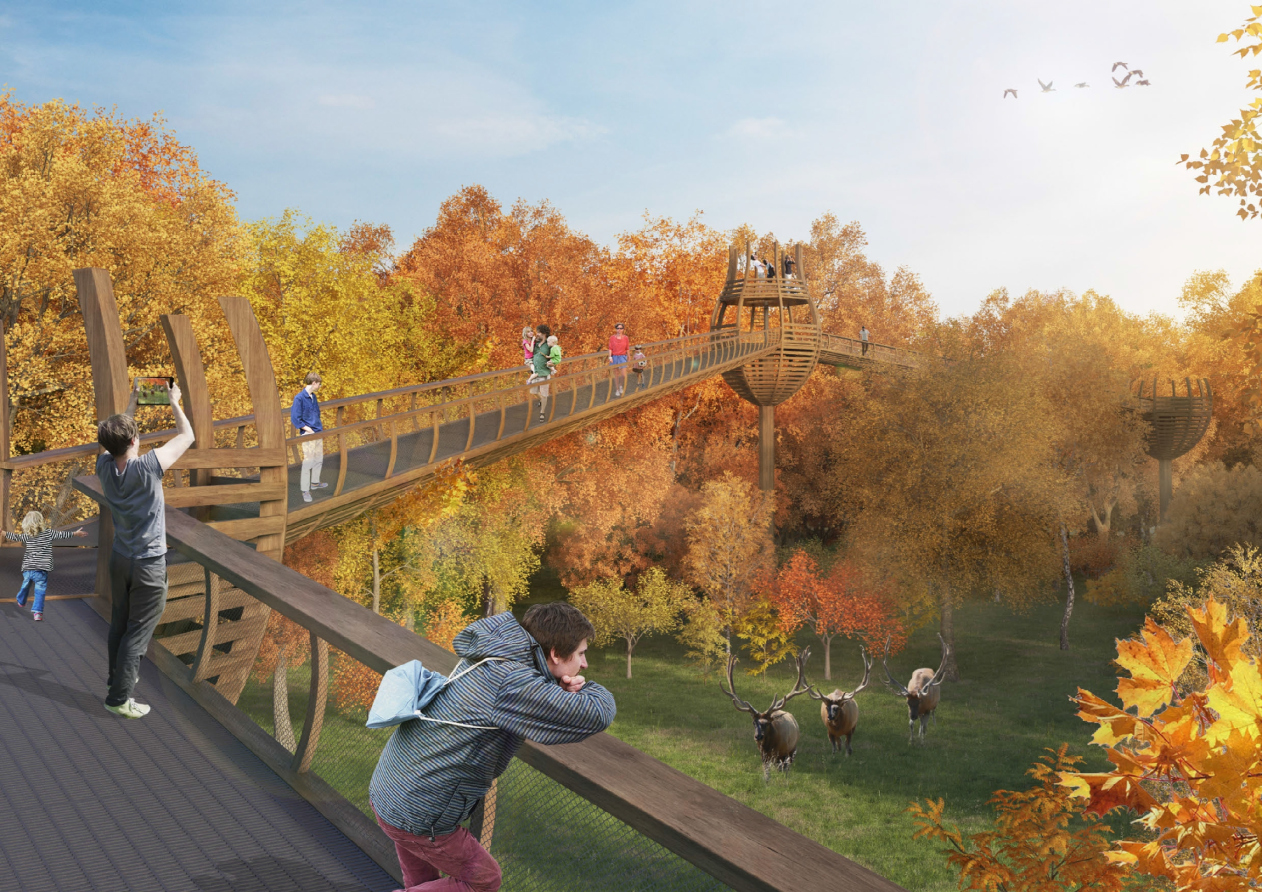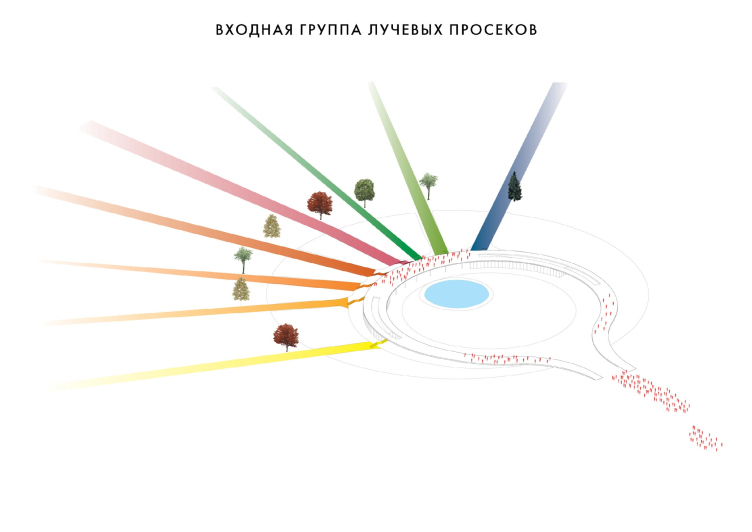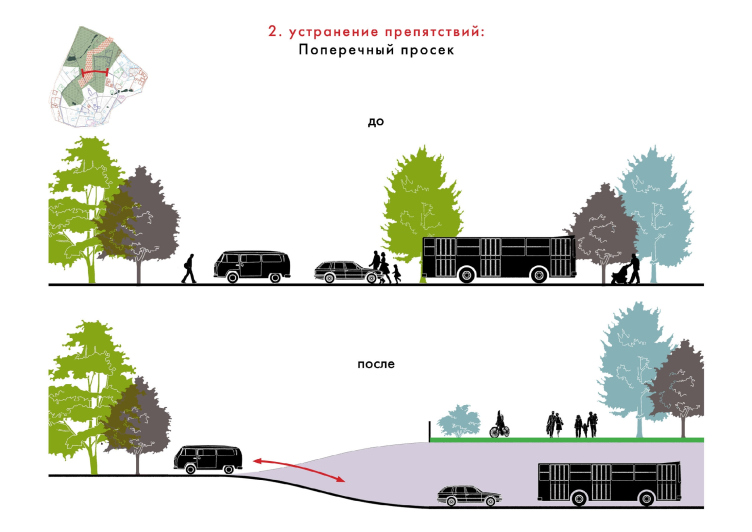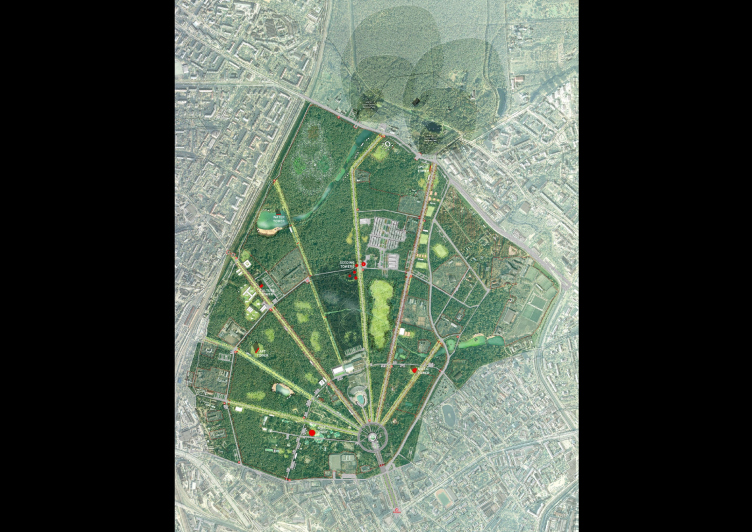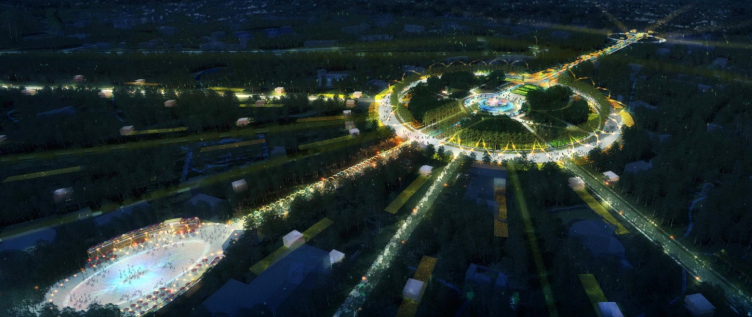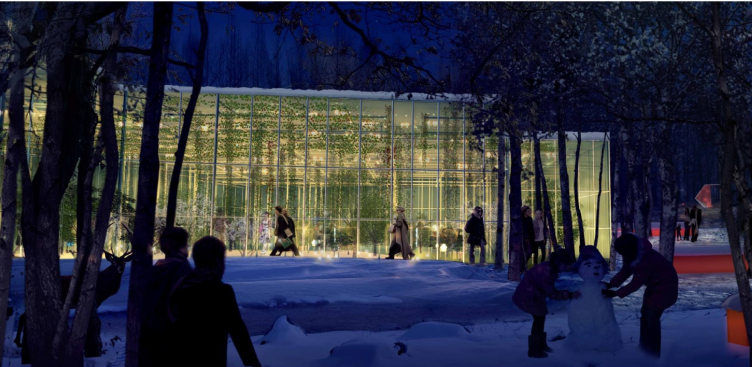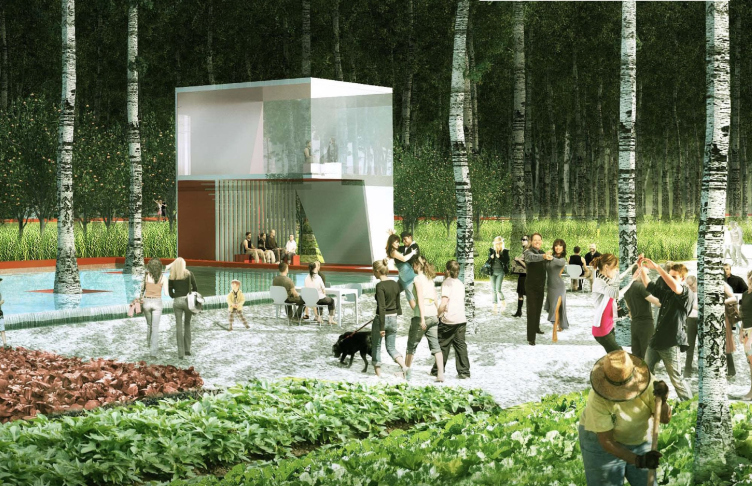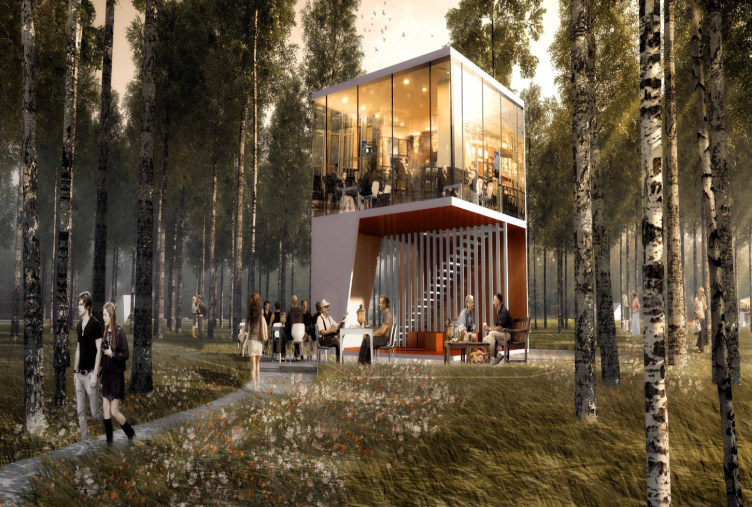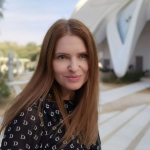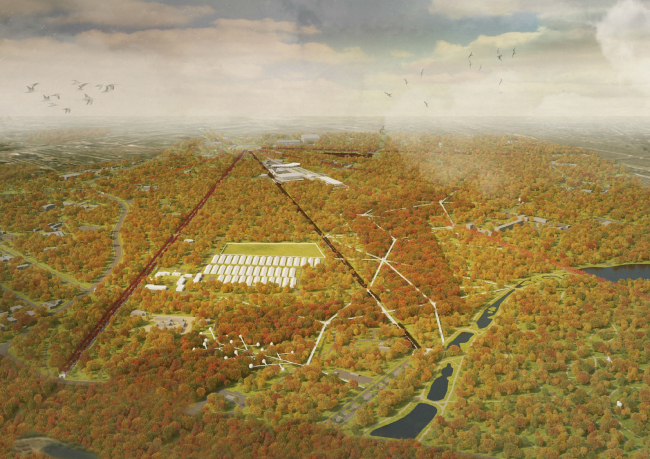
The international contest started on May 19 and consisted of two stages: the willingness to participate in it was expressed by 79 teams from different parts of the world but only ten consortiums from six countries were selected by the judging panel to pass into the second stage. Then, in the course of two months, these teams developed their proposals on the reconstruction of the park, and on the 16th of September, one day before the announcement of the results, the judging panel, presided by the head of Moscow Culture Department Sergey Kapkov, decided who the winner of the contest would be. This proved to be a tough call: as deputy chairman of the judging panel Marina Lulchuk notes, "each [of the second stage contestants - editor's note] deserved to win the first place and the winner was only identified by the point total". The session continued for more than six hours: the judging panel did not seem to be able to come to the final decision, and it was only the voting by points that helped the members to find the ultimate leader: the concept by Groundlab and Wowhaus that will determine the strategy of the park's development for the next 15 years.
Announcing the name of the contest winner, Sergey Kapkov noted that what the judging panel particularly liked about this project was not only the architectural and "ideological" part but also the sturdy and well thought-out economic model of developing the park by attracting the finances from outside the city budget. Thus the economy of the project became one of the most important criteria of evaluation. Apart from this, close attention was given to the sustainability of all the concepts and the probability of their actual implementation - because the main condition of the contest was keeping the environmental balance.
Sokolniki is one of Moscow's largest parks. It includes more than 500 hectares of green territory, 200 out of which are a natural zone of special protection. At the same time, most of the land (some 300 hectares), separated from the central area by a motorway, remains practically unused by the people. In this connection, the contestants were required to find a solution that would unite these two parts into a single natural complex. Andrew Lapshin, director of Sokolniki, noted that all the prize-winning projects address this issue to some degree - and this also became the decisive factor in choosing the winner.
The second prize was given to SokoLab project that was presented by the French-Russian consortium headed by Debarre Duplantiers Associes (France). The third place was shared by two projects. According to the point rating, the third place was taken by the project entitled "Vremya Chaya" ("Tea Time" - translator's note) prepared by the consortium headed by Turenscape Architects of China. However, the management of the park also very much liked the project entitled "Sokolniki Park: Legacy Evolution" that was developed by Netherlands' LOLA landscape architects in cooperation with the professionals from Columbia, Russia, and Belgium. Apart from that, a special mention was given to yet another concept presented by the Dutch team MLA+B.V., in which the history of the park gracefully intertwines with the contemporary content.
Hereby, we are presenting the prize-winning projects:
First place. "Nature's Embassy".
Authors: Groundlab (Nethelands), Wowhaus (Russia), Institute of Urban Planning "Urbanica" (Russia).
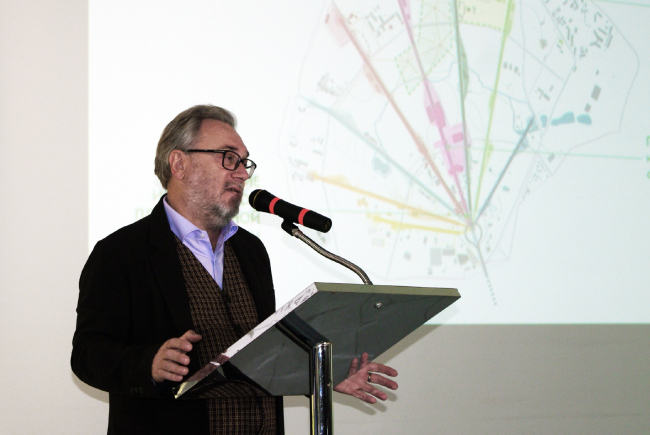
Oleg Shapiro, one of the authors of the winning project. Photo by Alla Pavlikova
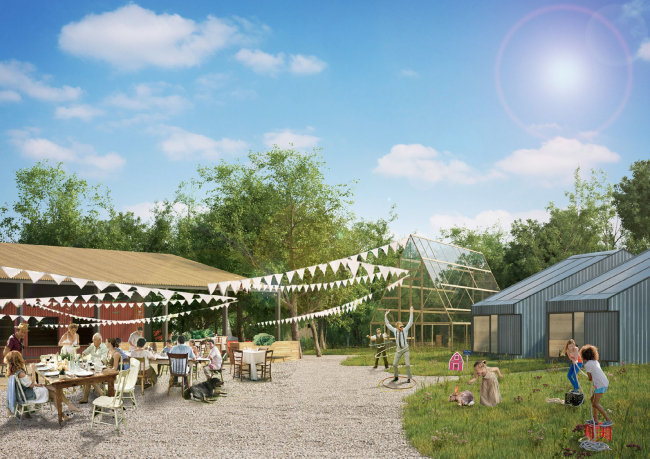
First place. "Nature's Embassy" Project. Authors: Groundlab (Netherlands), Wowhaus (Russia), Institute of urban planning "Urbanica" (Russia).
Oleg Shapiro, leader of Wowhaus:
"Sokolniki is one of Moscow's largest park areas, whose territory is also connected to the Losiny Island. Considering the sheer magnitude of this green territory, we proposed to call our project "Nature's Embassy in Moscow". The main theme of the project became the communication of man and nature on the most various levels: from surveying the wild animals to planting trees and taking care of them.
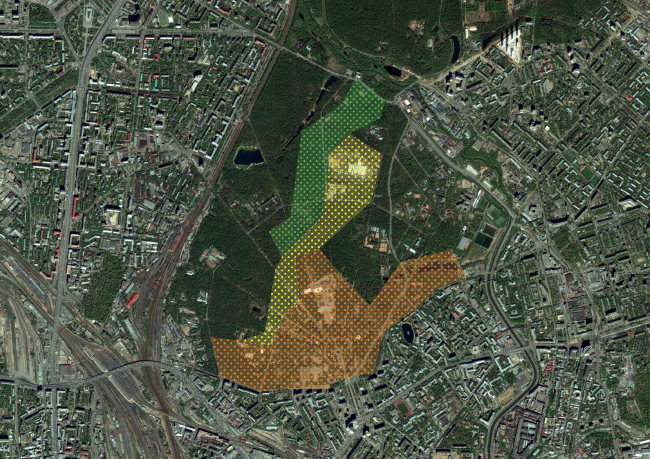
First place. "Nature's Embassy" Project. Authors: Groundlab (Netherlands), Wowhaus (Russia), Institute of urban planning "Urbanica" (Russia).
According to our concept, the natural corridor of the Losiny Island will be continued as far as the center of Sokolniki. This huge portion of the park will become a sanctuary totally outside the picture of urban development of the city. From the structural standpoint, the body of the park can be divided into three types of land use. The first one is precisely the belt that connects the Losiny Island to the park. In view of its primeval character, this belt was named "forest" in the project. The second layer is the park land which surrounds the "forest" and which is more accessible for the people. And, finally, the third part is the regular park, located at the entrance to Sokolniki, one that will gather all the entertainment and sport functions.
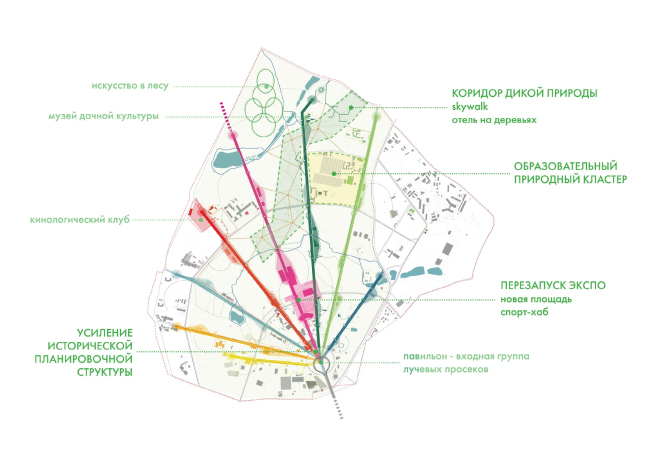
First place. "Nature's Embassy" Project. Authors: Groundlab (Netherlands), Wowhaus (Russia), Institute of urban planning "Urbanica" (Russia).

First place. "Nature's Embassy" Project. Authors: Groundlab (Netherlands), Wowhaus (Russia), Institute of urban planning "Urbanica" (Russia).
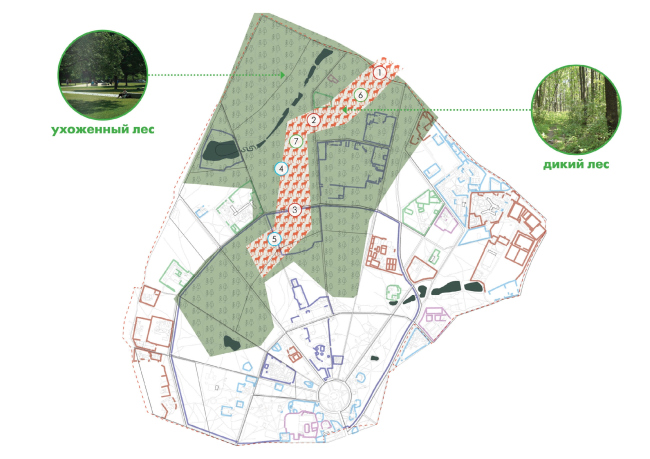
First place. "Nature's Embassy" Project. Authors: Groundlab (Netherlands), Wowhaus (Russia), Institute of urban planning "Urbanica" (Russia).
It was decided that the historical segmental structure of the park would be kept intact but at the same time each clearing will get a function of its own and will be decorated by its own particular plants. The driving map will also be significantly changed. The priority will be given to pedestrians but it will still be impossible to delete the car traffic off the traverse clearing altogether: it is planned that the auto and pedestrian flows will be spaced apart, special consideration given to the dedicated pathways for the animals between Sokolniki and the Losiny Island.
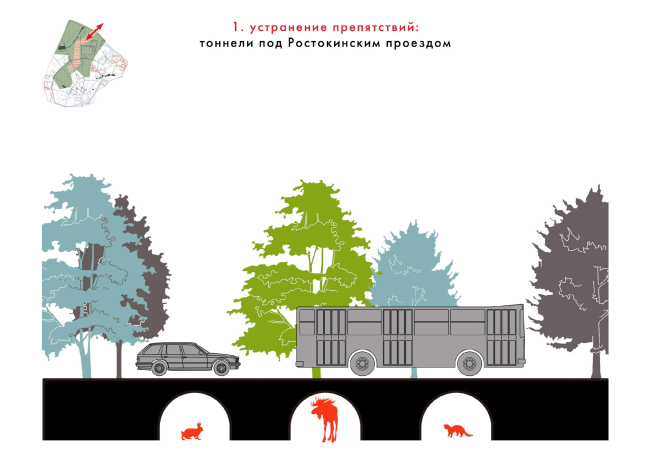
First place. "Nature's Embassy" Project. Authors: Groundlab (Netherlands), Wowhaus (Russia), Institute of urban planning "Urbanica" (Russia).

First place. "Nature's Embassy" Project. Authors: Groundlab (Netherlands), Wowhaus (Russia), Institute of urban planning "Urbanica" (Russia).
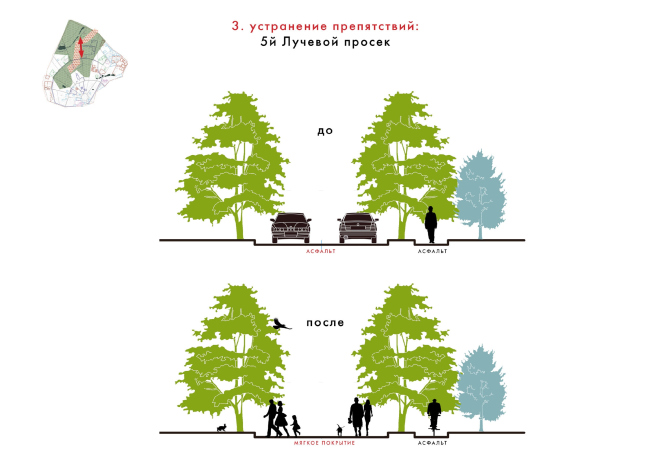
First place. "Nature's Embassy" Project. Authors: Groundlab (Netherlands), Wowhaus (Russia), Institute of urban planning "Urbanica" (Russia).
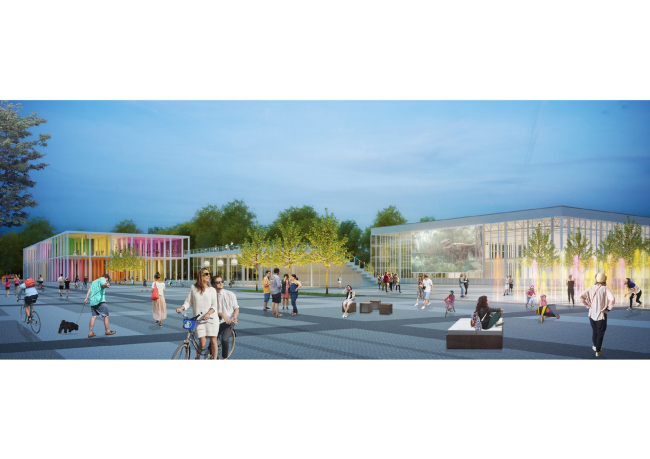
First place. "Nature's Embassy" Project. Authors: Groundlab (Netherlands), Wowhaus (Russia), Institute of urban planning "Urbanica" (Russia).
Special attention is given to the economic concept of the park's development, according to which particular emphasis will be laid on the work of the expo center and the sport facilities".
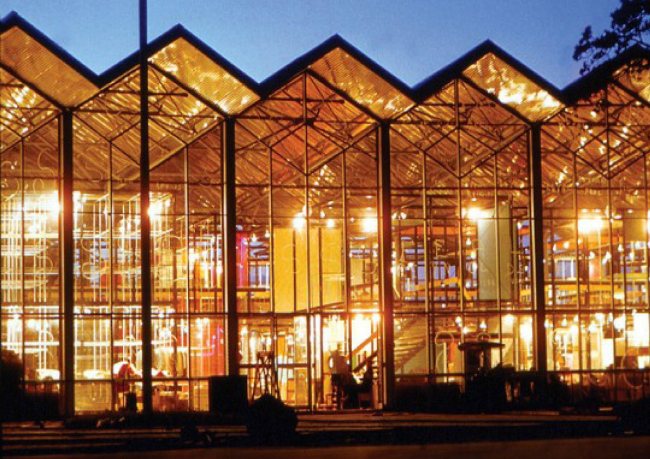
First place. "Nature's Embassy" Project. Authors: Groundlab (Netherlands), Wowhaus (Russia), Institute of urban planning "Urbanica" (Russia).
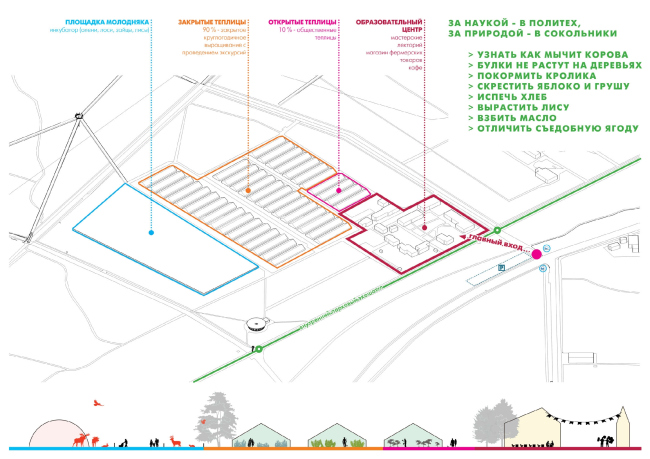
First place. "Nature's Embassy" Project. Authors: Groundlab (Netherlands), Wowhaus (Russia), Institute of urban planning "Urbanica" (Russia).

First place. "Nature's Embassy" Project. Authors: Groundlab (Netherlands), Wowhaus (Russia), Institute of urban planning "Urbanica" (Russia).
The judging panel especially noted the sustainability of the project coupled with the care for the history of Sokolniki, as well as the conformity of the project to the park's history.
Second place. SokoLab
Authors: Debarre Duplantiers Associes (France), Ingerop (France), "Prostor" (Russia), Fetish Film (Russia), RDNK (Russia).
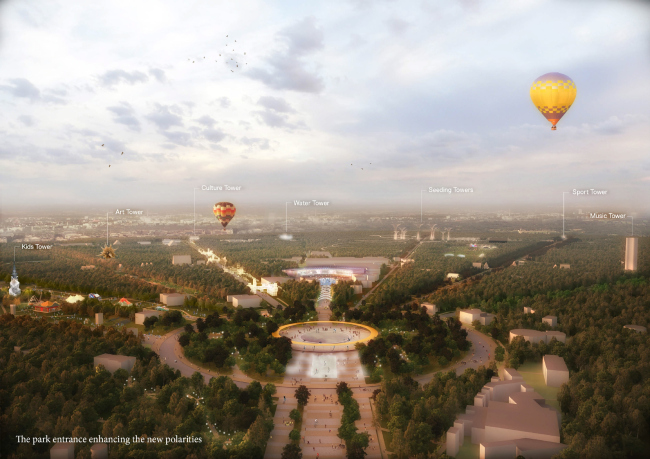
What the judging panel liked about this project was the detailed elaboration and the careful study of the peculiarities of the park.
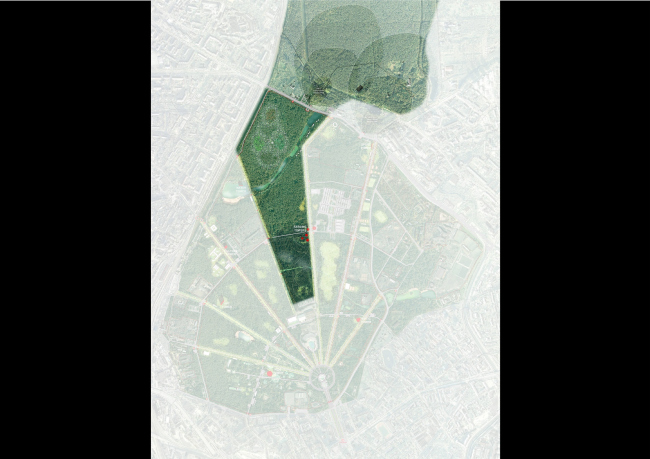
Second place. SokoLab Project. Authors: Debarre Duplantiers Associes, Ingerop (France), "Prostor" (Russia), Fetish Film (Russia), RDNK (Russia)
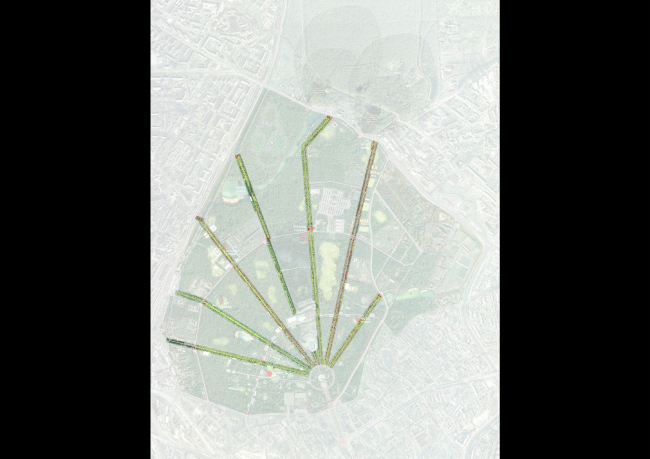
Second place. SokoLab Project. Authors: Debarre Duplantiers Associes, Ingerop (France), "Prostor" (Russia), Fetish Film (Russia), RDNK (Russia)

Second place. SokoLab Project. Authors: Debarre Duplantiers Associes, Ingerop (France), "Prostor" (Russia), Fetish Film (Russia), RDNK (Russia)
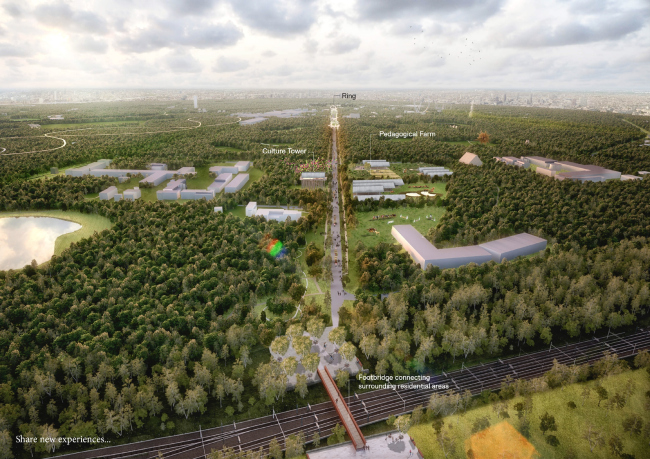
Second place. SokoLab Project. Authors: Debarre Duplantiers Associes, Ingerop (France), "Prostor" (Russia), Fetish Film (Russia), RDNK (Russia)
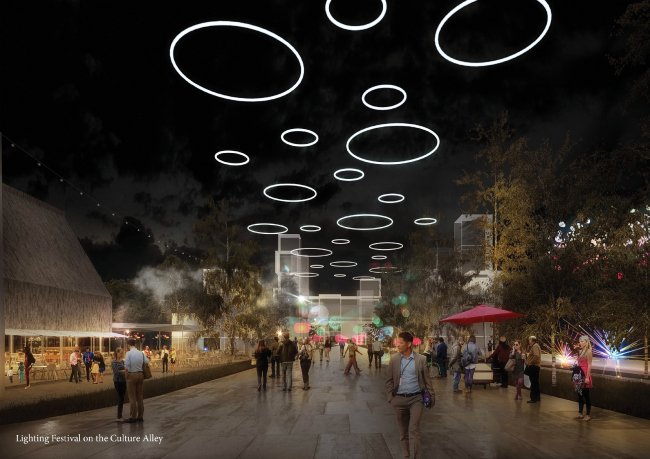
Second place. SokoLab Project. Authors: Debarre Duplantiers Associes, Ingerop (France), "Prostor" (Russia), Fetish Film (Russia), RDNK (Russia)
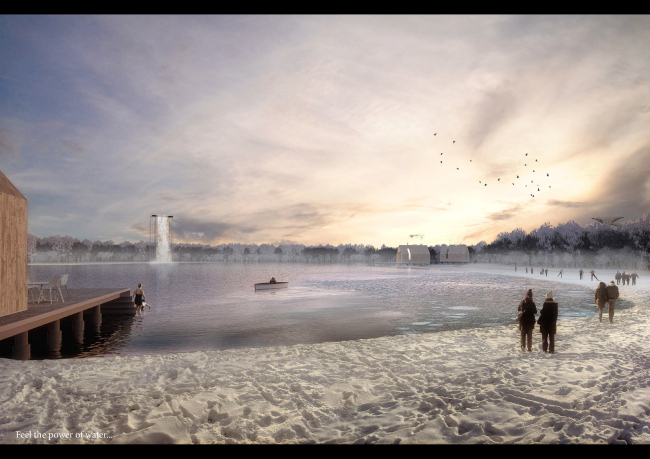
Second place. SokoLab Project. Authors: Debarre Duplantiers Associes, Ingerop (France), "Prostor" (Russia), Fetish Film (Russia), RDNK (Russia)
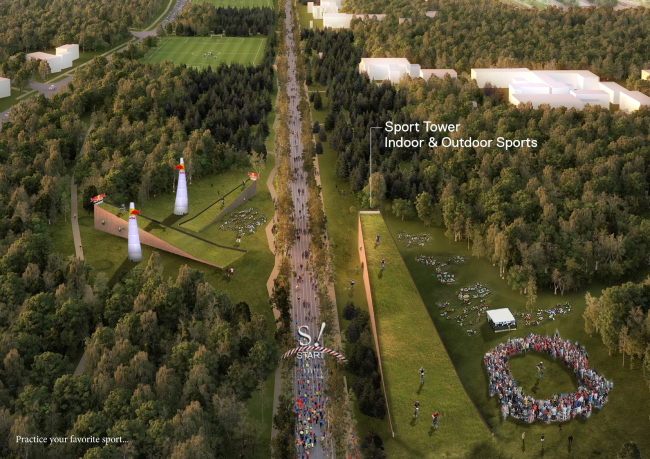
Second place. SokoLab Project. Authors: Debarre Duplantiers Associes, Ingerop (France), "Prostor" (Russia), Fetish Film (Russia), RDNK (Russia)

Second place. SokoLab Project. Authors: Debarre Duplantiers Associes, Ingerop (France), "Prostor" (Russia), Fetish Film (Russia), RDNK (Russia)
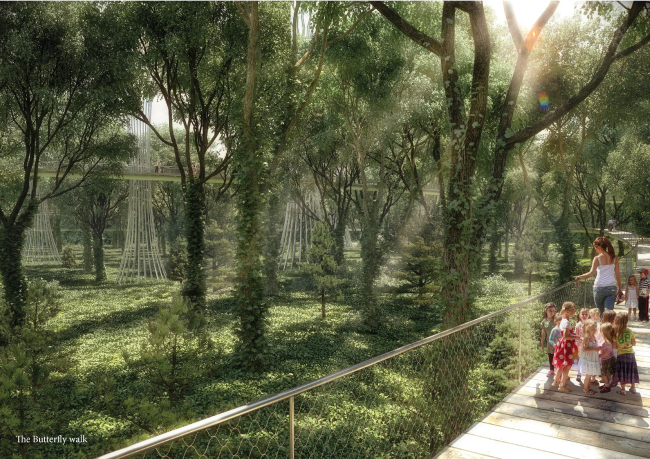
Second place. SokoLab Project. Authors: Debarre Duplantiers Associes, Ingerop (France), "Prostor" (Russia), Fetish Film (Russia), RDNK (Russia)
Third place. "Sokolniki Park: Evolution Legacy".
Authors: Lola Landscape architects (Netherlands), Architectural group a3OH (Russia), Taller 301 (Columbia), Land + Civilization Compositions (Netherlands), Symboisis Grontmij Belgium NV (Belgium), Studio Transformer (Russia), Polyester.
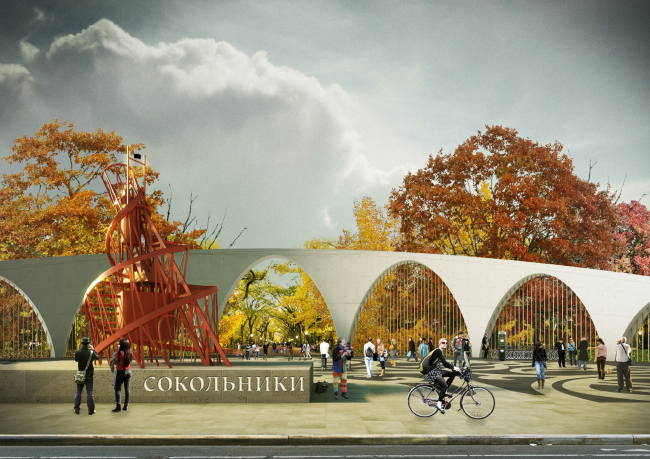
The judging panel gave special mention to the gracefulness and simplicity of the proposals and their possible implementation. For example, in one of the clearings the authors proposed to create a promenade surrounded by the palm trees and on the spot of today's greenhouses - make a huge lawn.
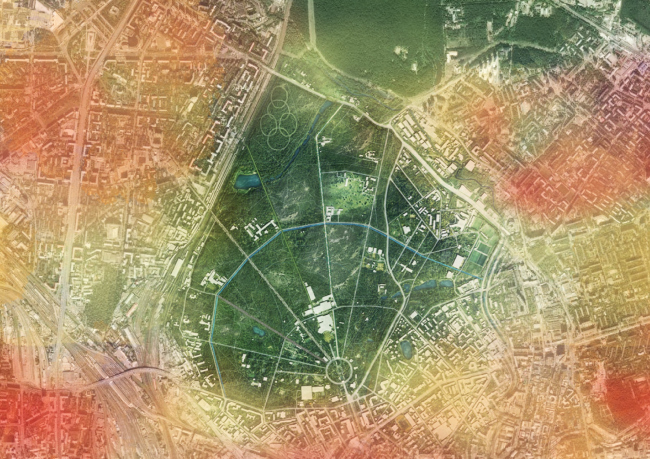
Third place. "Sokolniki Park: Legacy Evolution". Authors: Lola Landscape architects (Netherlands), Architectural group ЗОН (Russia), Taller 301 (Columbia), Land + Civilization Compositions (Netherlands), Symboisis Grontmij Belgium NV (Belgium), Studio Transformer (Russia), Polyester
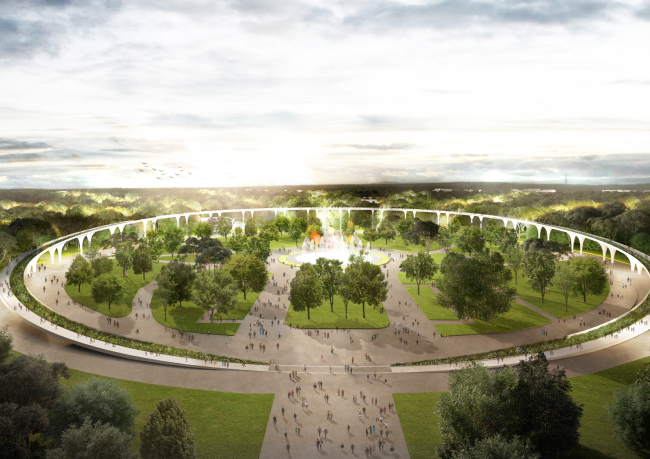
Third place. "Sokolniki Park: Legacy Evolution". Authors: Lola Landscape architects (Netherlands), Architectural group ЗОН (Russia), Taller 301 (Columbia), Land + Civilization Compositions (Netherlands), Symboisis Grontmij Belgium NV (Belgium), Studio Transformer (Russia), Polyester
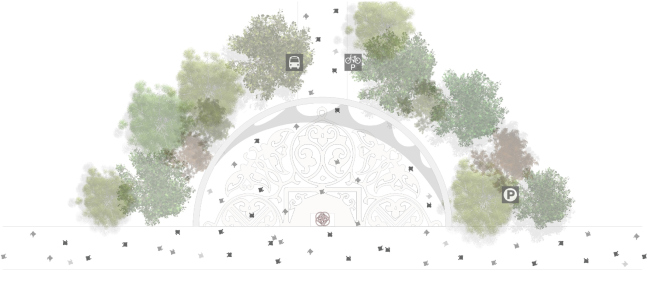
Third place. "Sokolniki Park: Legacy Evolution". Authors: Lola Landscape architects (Netherlands), Architectural group ЗОН (Russia), Taller 301 (Columbia), Land + Civilization Compositions (Netherlands), Symboisis Grontmij Belgium NV (Belgium), Studio Transformer (Russia), Polyester
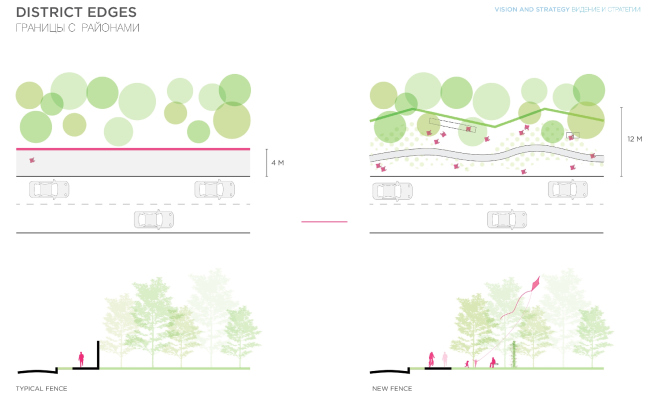
Third place. "Sokolniki Park: Legacy Evolution". Authors: Lola Landscape architects (Netherlands), Architectural group ЗОН (Russia), Taller 301 (Columbia), Land + Civilization Compositions (Netherlands), Symboisis Grontmij Belgium NV (Belgium), Studio Transformer (Russia), Polyester
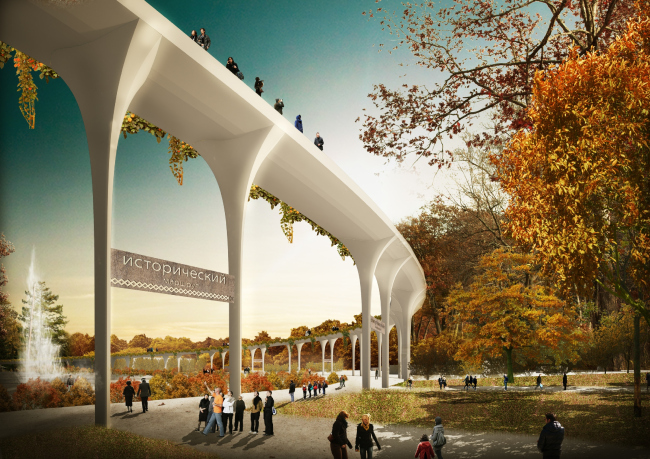
Third place. "Sokolniki Park: Legacy Evolution". Authors: Lola Landscape architects (Netherlands), Architectural group ЗОН (Russia), Taller 301 (Columbia), Land + Civilization Compositions (Netherlands), Symboisis Grontmij Belgium NV (Belgium), Studio Transformer (Russia), Polyester
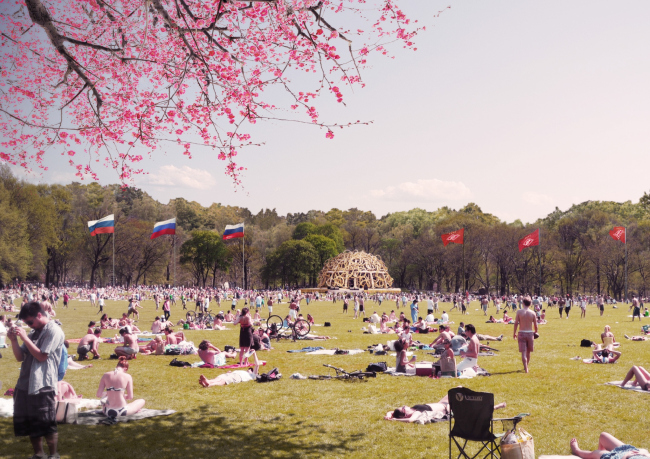
Third place. "Sokolniki Park: Legacy Evolution". Authors: Lola Landscape architects (Netherlands), Architectural group ЗОН (Russia), Taller 301 (Columbia), Land + Civilization Compositions (Netherlands), Symboisis Grontmij Belgium NV (Belgium), Studio Transformer (Russia), Polyester
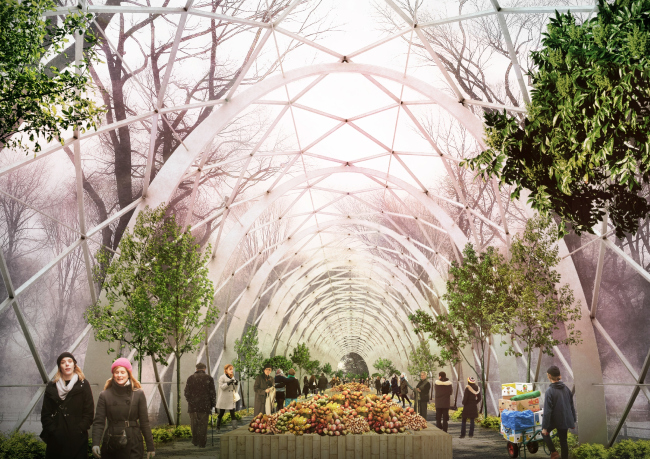
Third place. "Sokolniki Park: Legacy Evolution". Authors: Lola Landscape architects (Netherlands), Architectural group ЗОН (Russia), Taller 301 (Columbia), Land + Civilization Compositions (Netherlands), Symboisis Grontmij Belgium NV (Belgium), Studio Transformer (Russia), Polyester
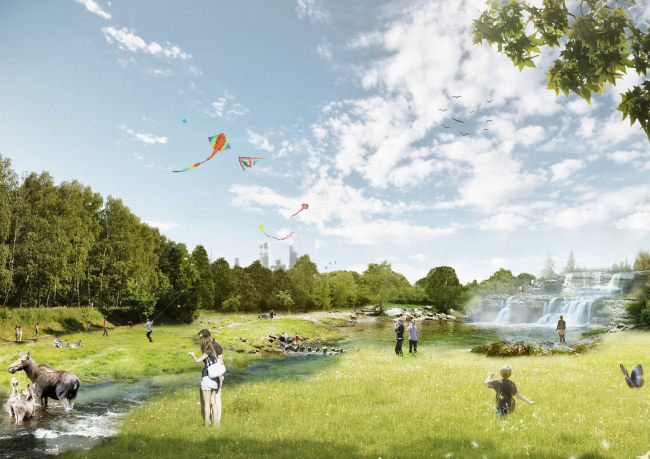
Third place. "Sokolniki Park: Legacy Evolution". Authors: Lola Landscape architects (Netherlands), Architectural group ЗОН (Russia), Taller 301 (Columbia), Land + Civilization Compositions (Netherlands), Symboisis Grontmij Belgium NV (Belgium), Studio Transformer (Russia), Polyester
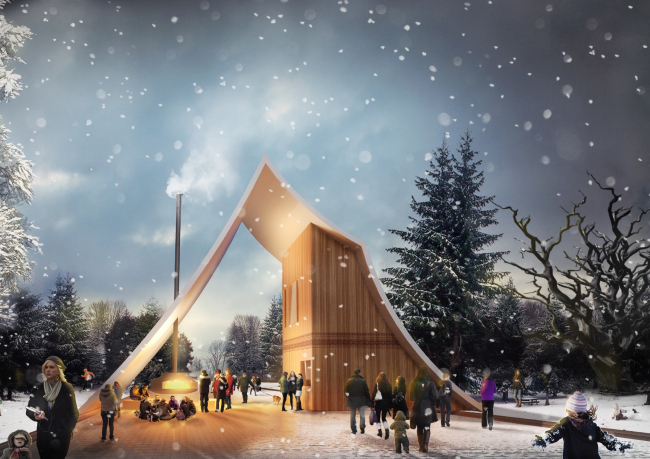
Third place. "Sokolniki Park: Legacy Evolution". Authors: Lola Landscape architects (Netherlands), Architectural group ЗОН (Russia), Taller 301 (Columbia), Land + Civilization Compositions (Netherlands), Symboisis Grontmij Belgium NV (Belgium), Studio Transformer (Russia), Polyester
Third place. "Vremya Chaya" ("Tea Time")
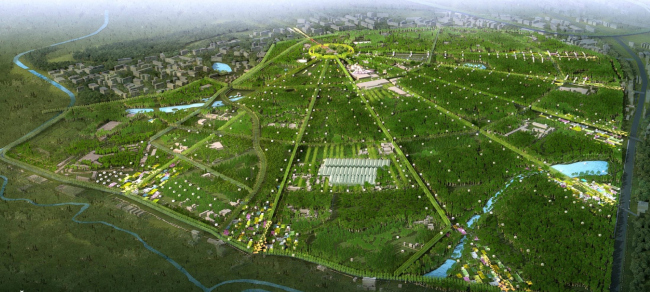
Third place. "Vremya Chaya" ("Tea Time") Project. Authors: Turenscape (China), Strelka (Russia), MIX Design Studio, AECOM LLC (Russia)
Authors: Turenscape (China), Strelka (Russia), MIX Design Studio, AECOM LLC (Russia)
The authors went as far as coming up with a new conceptual name - "Park-Samovar" (an urn with a spigot at its base used in Russia to boil water for tea. - translator's note). The project is predominantly based on the Russian tradition of tea parties. All the park territory is filled with various thematic spots where the visitors can make a stop and have a cup of tea.

Third place. "Vremya Chaya" ("Tea Time") Project. Authors: Turenscape (China), Strelka (Russia), MIX Design Studio, AECOM LLC (Russia)
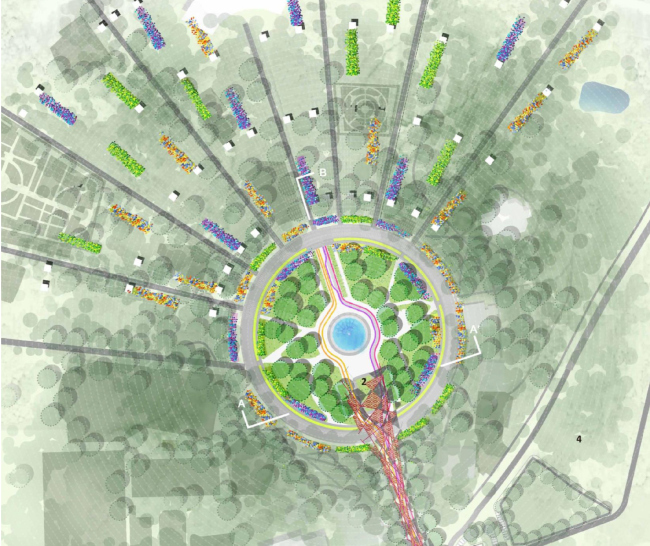
Third place. "Vremya Chaya" ("Tea Time") Project. Authors: Turenscape (China), Strelka (Russia), MIX Design Studio, AECOM LLC (Russia)
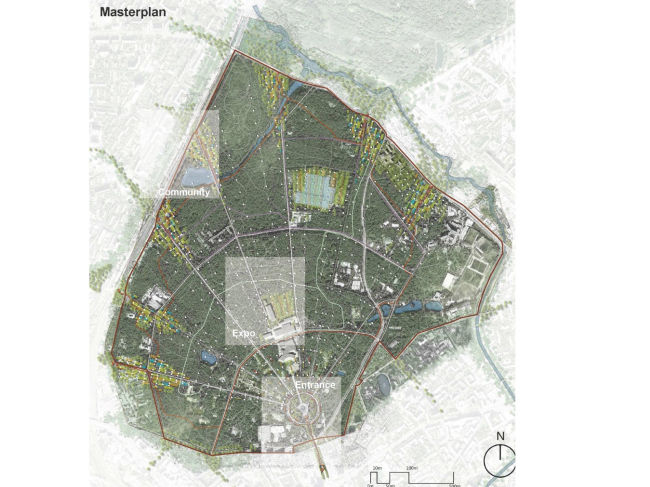
Third place. "Vremya Chaya" ("Tea Time") Project. Authors: Turenscape (China), Strelka (Russia), MIX Design Studio, AECOM LLC (Russia)

Third place. "Vremya Chaya" ("Tea Time") Project. Authors: Turenscape (China), Strelka (Russia), MIX Design Studio, AECOM LLC (Russia)
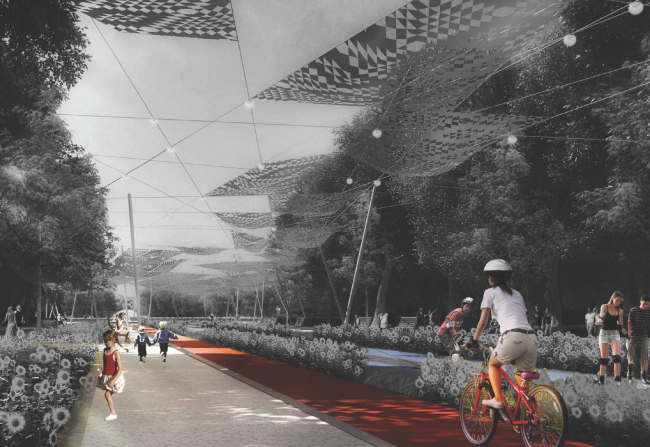
Third place. "Vremya Chaya" ("Tea Time") Project. Authors: Turenscape (China), Strelka (Russia), MIX Design Studio, AECOM LLC (Russia)
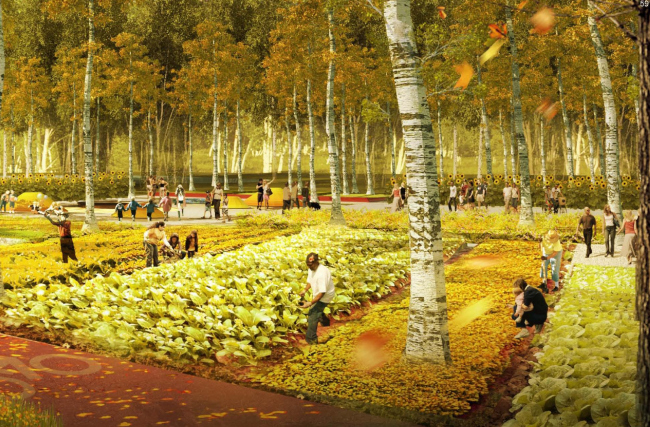
Third place. "Vremya Chaya" ("Tea Time") Project. Authors: Turenscape (China), Strelka (Russia), MIX Design Studio, AECOM LLC (Russia)

Third place. "Vremya Chaya" ("Tea Time") Project. Authors: Turenscape (China), Strelka (Russia), MIX Design Studio, AECOM LLC (Russia)

Third place. "Vremya Chaya" ("Tea Time") Project. Authors: Turenscape (China), Strelka (Russia), MIX Design Studio, AECOM LLC (Russia)
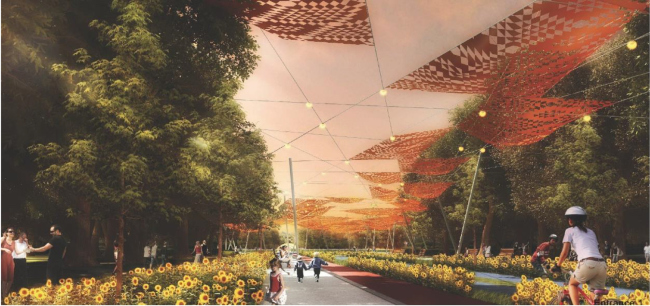
Third place. "Vremya Chaya" ("Tea Time") Project. Authors: Turenscape (China), Strelka (Russia), MIX Design Studio, AECOM LLC (Russia)
***
Based on the results of the contest, Sokolniki Park will for three months present an exhibition of all the finalists' projects. According to Andrew Lapshin, the most interesting of ideas proposed by the prize winners will still be used in the implementation of the park reconstruction project, while their authors will be invited to take part in the project in their dedicated work areas. Sergey Kapkov also noted that the solutions proposed by the contest participants will surely be employed by the city because presently there will be implemented the mayor-approved program of improving Moscow's park territories: today, more than a hundred park territories have been handed over to the Culture Department that has the task of reconstructing them before 2017. The judging panel:
Chairman - Sergey Kapkov, minister of the Moscow government, chief of Moscow Culture Department;
Deputy chairman of the judging panel - Marina Lulchuk, director of "Mosgorpark United Management";
Deputy chairman of the judging panel - Olga Gritsan, chief of the department for development of the park territories of "Mosgorpark United Management";
Julia Kudryashova, deputy head of Moscow Department of Land Use and Conservation;
Digby Whyte, the main executive director of the International Federation of Park and Recreation;
Eugene Ace, president of the architectural school "MARCH";
Taisia Wolftrub, president of the association of landscape architects of Russia, chief landscape architect of "EMPIRE" architectural bureau;
Elena Gonzales, architectural reviewer, curator of "ArchMoscow" exhibition;
Elena Solovieva, head of the scientific and project association "Regulation of town-planning activities on the historical territories and protected areas of cultural legacy monuments" of Research and Development Institute of the General Plan of Moscow;
Gabriele Filippini, architect, professor, leader of Studio Arch Gabriele Filippini;
Guillermo Penalosa, expert in the field of the development of city parks, increasing the mobility, and attaching the city people to the transformation of the city environment, executive director of "8-80 Cities" (Canada);
Muriel Russo-Ovchinnikov, the founder and creative director of "Lieu Commun" agency;
Eugenia Galetka, the managing partner and General director of "Journey" event-agency;
Julia Shakhnovskaya, director of the Polytechnic Museum;
Natalia Danilina, director of the ecology education center "Sanctuaries";
Natalia Matveeva, the curator of the department of the gardening monuments under the Agency for preservation of special cultural legacy objects of the Department of Cultural Legacy of Moscow.
First place. "Nature's Embassy" Project. Authors: Groundlab (Netherlands), Wowhaus (Russia), Institute of urban planning "Urbanica" (Russia).
Oleg Shapiro, one of the authors of the winning project. Photo by Alla Pavlikova
First place. "Nature's Embassy" Project. Authors: Groundlab (Netherlands), Wowhaus (Russia), Institute of urban planning "Urbanica" (Russia).
First place. "Nature's Embassy" Project. Authors: Groundlab (Netherlands), Wowhaus (Russia), Institute of urban planning "Urbanica" (Russia).
First place. "Nature's Embassy" Project. Authors: Groundlab (Netherlands), Wowhaus (Russia), Institute of urban planning "Urbanica" (Russia).
First place. "Nature's Embassy" Project. Authors: Groundlab (Netherlands), Wowhaus (Russia), Institute of urban planning "Urbanica" (Russia).
First place. "Nature's Embassy" Project. Authors: Groundlab (Netherlands), Wowhaus (Russia), Institute of urban planning "Urbanica" (Russia).
First place. "Nature's Embassy" Project. Authors: Groundlab (Netherlands), Wowhaus (Russia), Institute of urban planning "Urbanica" (Russia).
First place. "Nature's Embassy" Project. Authors: Groundlab (Netherlands), Wowhaus (Russia), Institute of urban planning "Urbanica" (Russia).
First place. "Nature's Embassy" Project. Authors: Groundlab (Netherlands), Wowhaus (Russia), Institute of urban planning "Urbanica" (Russia).
First place. "Nature's Embassy" Project. Authors: Groundlab (Netherlands), Wowhaus (Russia), Institute of urban planning "Urbanica" (Russia).
First place. "Nature's Embassy" Project. Authors: Groundlab (Netherlands), Wowhaus (Russia), Institute of urban planning "Urbanica" (Russia).
First place. "Nature's Embassy" Project. Authors: Groundlab (Netherlands), Wowhaus (Russia), Institute of urban planning "Urbanica" (Russia).
First place. "Nature's Embassy" Project. Authors: Groundlab (Netherlands), Wowhaus (Russia), Institute of urban planning "Urbanica" (Russia).
Second place. SokoLab Project. Authors: Debarre Duplantiers Associes, Ingerop (France), "Prostor" (Russia), Fetish Film (Russia), RDNK (Russia)
Second place. SokoLab Project. Authors: Debarre Duplantiers Associes, Ingerop (France), "Prostor" (Russia), Fetish Film (Russia), RDNK (Russia)
Second place. SokoLab Project. Authors: Debarre Duplantiers Associes, Ingerop (France), "Prostor" (Russia), Fetish Film (Russia), RDNK (Russia)
Second place. SokoLab Project. Authors: Debarre Duplantiers Associes, Ingerop (France), "Prostor" (Russia), Fetish Film (Russia), RDNK (Russia)
Second place. SokoLab Project. Authors: Debarre Duplantiers Associes, Ingerop (France), "Prostor" (Russia), Fetish Film (Russia), RDNK (Russia)
Second place. SokoLab Project. Authors: Debarre Duplantiers Associes, Ingerop (France), "Prostor" (Russia), Fetish Film (Russia), RDNK (Russia)
Second place. SokoLab Project. Authors: Debarre Duplantiers Associes, Ingerop (France), "Prostor" (Russia), Fetish Film (Russia), RDNK (Russia)
Second place. SokoLab Project. Authors: Debarre Duplantiers Associes, Ingerop (France), "Prostor" (Russia), Fetish Film (Russia), RDNK (Russia)
Second place. SokoLab Project. Authors: Debarre Duplantiers Associes, Ingerop (France), "Prostor" (Russia), Fetish Film (Russia), RDNK (Russia)
Second place. SokoLab Project. Authors: Debarre Duplantiers Associes, Ingerop (France), "Prostor" (Russia), Fetish Film (Russia), RDNK (Russia)
Third place. "Sokolniki Park: Legacy Evolution". Authors: Lola Landscape architects (Netherlands), Architectural group ЗОН (Russia), Taller 301 (Columbia), Land + Civilization Compositions (Netherlands), Symboisis Grontmij Belgium NV (Belgium), Studio Tra
Third place. "Sokolniki Park: Legacy Evolution". Authors: Lola Landscape architects (Netherlands), Architectural group ЗОН (Russia), Taller 301 (Columbia), Land + Civilization Compositions (Netherlands), Symboisis Grontmij Belgium NV (Belgium), Studio Tra
Third place. "Sokolniki Park: Legacy Evolution". Authors: Lola Landscape architects (Netherlands), Architectural group ЗОН (Russia), Taller 301 (Columbia), Land + Civilization Compositions (Netherlands), Symboisis Grontmij Belgium NV (Belgium), Studio Tra
Third place. "Sokolniki Park: Legacy Evolution". Authors: Lola Landscape architects (Netherlands), Architectural group ЗОН (Russia), Taller 301 (Columbia), Land + Civilization Compositions (Netherlands), Symboisis Grontmij Belgium NV (Belgium), Studio Tra
Third place. "Sokolniki Park: Legacy Evolution". Authors: Lola Landscape architects (Netherlands), Architectural group ЗОН (Russia), Taller 301 (Columbia), Land + Civilization Compositions (Netherlands), Symboisis Grontmij Belgium NV (Belgium), Studio Tra
Third place. "Sokolniki Park: Legacy Evolution". Authors: Lola Landscape architects (Netherlands), Architectural group ЗОН (Russia), Taller 301 (Columbia), Land + Civilization Compositions (Netherlands), Symboisis Grontmij Belgium NV (Belgium), Studio Tra
Third place. "Sokolniki Park: Legacy Evolution". Authors: Lola Landscape architects (Netherlands), Architectural group ЗОН (Russia), Taller 301 (Columbia), Land + Civilization Compositions (Netherlands), Symboisis Grontmij Belgium NV (Belgium), Studio Tra
Third place. "Sokolniki Park: Legacy Evolution". Authors: Lola Landscape architects (Netherlands), Architectural group ЗОН (Russia), Taller 301 (Columbia), Land + Civilization Compositions (Netherlands), Symboisis Grontmij Belgium NV (Belgium), Studio Tra
Third place. "Sokolniki Park: Legacy Evolution". Authors: Lola Landscape architects (Netherlands), Architectural group ЗОН (Russia), Taller 301 (Columbia), Land + Civilization Compositions (Netherlands), Symboisis Grontmij Belgium NV (Belgium), Studio Tra
Third place. "Sokolniki Park: Legacy Evolution". Authors: Lola Landscape architects (Netherlands), Architectural group ЗОН (Russia), Taller 301 (Columbia), Land + Civilization Compositions (Netherlands), Symboisis Grontmij Belgium NV (Belgium), Studio Tra
Third place. "Vremya Chaya" ("Tea Time") Project. Authors: Turenscape (China), Strelka (Russia), MIX Design Studio, AECOM LLC (Russia)
Third place. "Vremya Chaya" ("Tea Time") Project. Authors: Turenscape (China), Strelka (Russia), MIX Design Studio, AECOM LLC (Russia)
Third place. "Vremya Chaya" ("Tea Time") Project. Authors: Turenscape (China), Strelka (Russia), MIX Design Studio, AECOM LLC (Russia)
Third place. "Vremya Chaya" ("Tea Time") Project. Authors: Turenscape (China), Strelka (Russia), MIX Design Studio, AECOM LLC (Russia)
Third place. "Vremya Chaya" ("Tea Time") Project. Authors: Turenscape (China), Strelka (Russia), MIX Design Studio, AECOM LLC (Russia)
Third place. "Vremya Chaya" ("Tea Time") Project. Authors: Turenscape (China), Strelka (Russia), MIX Design Studio, AECOM LLC (Russia)
Third place. "Vremya Chaya" ("Tea Time") Project. Authors: Turenscape (China), Strelka (Russia), MIX Design Studio, AECOM LLC (Russia)
Third place. "Vremya Chaya" ("Tea Time") Project. Authors: Turenscape (China), Strelka (Russia), MIX Design Studio, AECOM LLC (Russia)
Third place. "Vremya Chaya" ("Tea Time") Project. Authors: Turenscape (China), Strelka (Russia), MIX Design Studio, AECOM LLC (Russia)
Third place. "Vremya Chaya" ("Tea Time") Project. Authors: Turenscape (China), Strelka (Russia), MIX Design Studio, AECOM LLC (Russia)
